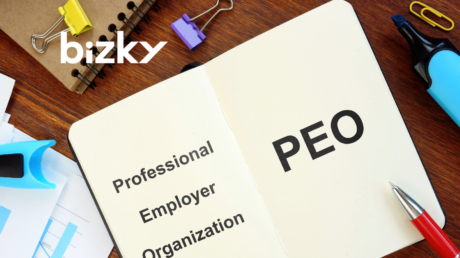Denmark
Foreign firms can establish a presence in Denmark by registering as a branch office, subsidiary, or representative office.
1.Market overview
2.Entering the marke
3.Costs to the employer
4.Pay and taxes
5.Payroll timeline
6.Leave Policies
7.Termination Policy and severance
8.Time off during the year
9.Onboarding of employees
Market Overview:
| Currency | Corporate Tax | VAT | Workforce Size |
|---|---|---|---|
| DKK | 22% | 25% | 2.8 million |
Entering the market:
Legal Structure: Foreign firms can establish a presence in Denmark by registering as a branch office, subsidiary, or representative office. Each structure has its own set of requirements and implications, providing flexibility for businesses to choose the most suitable option.
Company Registration: Registering a foreign company in Denmark involves selecting a unique name, providing information about directors and shareholders, and submitting the necessary documentation to the Danish Business Authority (Erhvervsstyrelsen). The process can be completed online for convenience.
Business Activities: Certain business activities may require specific permits or licenses in Denmark, depending on the industry. Compliance with relevant regulations is essential, particularly for sectors like finance, healthcare, and food services.
Taxation: Foreign companies operating in Denmark are subject to Danish taxation laws. Understanding the tax implications and fulfilling tax obligations is vital. Seeking professional advice can help ensure compliance and optimize tax arrangements.
Employment and Visas: Hiring employees in Denmark requires compliance with Danish employment laws and immigration rules. Work permits and visas may be necessary for foreign employees based on their nationality and the nature of their work.
Local Representation: Some foreign firms choose to appoint a local agent or representative in Denmark to handle administrative matters, especially if they do not have a physical presence in the country.
There are three options for registering a company:
| Name | Implications |
|---|---|
| Branch Office | Branch Office is an extension of the foreign company and operates under its name. It conducts business activities in Denmark on behalf of the parent company and is subject to Danish laws and regulations. The branch office does not have a separate legal personality from the parent company. |
| Subsidiary | A foreign company can establish a subsidiary in Denmark, which is a separate legal entity from the parent company. The subsidiary is owned by a foreign company and operates independently in Denmark. It is subject to Danish laws and regulations and has its own management and decision-making processes. |
| Representative Office | A representative office is a non-trading entity established by a foreign company to conduct market research, promotion, and liaison activities in Denmark. It cannot engage in commercial or profit-generating activities. Representative offices are relatively simple to set up and are often used for exploring business opportunities in the Danish market. |
Cost to the employer:
| Cost | Amount |
|---|---|
| Cost | Amount |
| Employer Social Security Contribution | Approx. 8% – 12.9% |
| Labor Market Supplementary Pension | Approx. 4% – 7% |
| Labor Market Contributions | Approx. 0.08% – 0.19% |
| Holiday Pay Contribution | Approx. 12.5% (of earned pay) |
| Sickness Benefits Contribution | Approx. 0.34% – 5.99% |
| Unemployment Insurance Contribution | Approx. 1.08% – 8% |
| ATP Pension Scheme | DKK 320 – DKK 3,440 annually |
Total costs for employer = between 20.3% and 36.6% of base salary
Pay and taxes:
Minimum Wage: There’s no minimum wage in Denmark. It is decided by collective bargaining agreements for different sectors and may vary from industry to industry. There is a minimum yearly pay set for foreign workers equal to 465,000 DDK, which translates to 68,215.50 dollars.
Overtime: Employees in Denmark are not entitled to overtime pay unless stated otherwise in the employment agreement. An employee may work a maximum of 48 hours per week. Every hour beyond 37 hours weekly, is compensated at the rate of between 150% and 200% of base hourly pay depending on the nature of the job and the employment contract.
Working hours: The average working hours in Denmark are 37.5 hours per week. However, a maximum of 48 hours can be worked during a five-day workweek.
Bonuses: Employees in Ireland are not legally entitled to receive bonuses. However, employers have the discretion to provide bonuses as incentives or rewards. Bonuses are generally considered taxable income and are subject to the prevailing income tax rates in Denmark.
Payroll timeline:
| Schedule | Date |
|---|---|
| Payroll Cycle | Monthly |
| Payroll Cut off date | 20th of the month |
| Invoice issuance date | 26th of the month |
| Payment date | Last date of the month |
Employees are to be paid by the last day of the month.
Payroll can also be weekly if an employer elects so.
Taxes:
| Income Tax | Tax Basis | Tax rate |
|---|---|---|
| Bottom tax | Personal income | 12.9% |
| Top tax | Personal income | 15% |
| Local Tax: | Tax Basis: | Tax rate: |
|---|---|---|
| Municipal tax | Taxable income | 25% |
| Labor market taxes | Personal income | 8% |
| Share Tax: | Tax Basis: | Tax rate: |
|---|---|---|
| Below DKK 58,900 | Share income | 27% |
| Above DKK 58,900 | Share income | 42% |
Leave Policies:
| Type of Leave | Policy |
|---|---|
| Maternity Leave | Pregnant employees in Denmark have a statutory entitlement to 18 weeks of maternity leave, with four weeks before the due date and 14 weeks after birth. During this period, eligible employees covered by the Danish Salaried Employees Act are entitled to receive 50.00% of their regular salary from the employer, starting four weeks before the expected date of birth until 14 weeks after the actual delivery. |
| Paternity Leave | In Denmark, fathers can take two weeks of paternity leave while the mother is on her 14-week maternity leave. Employers are not legally required to provide salary during paternity leave, but it is customary, based on collective or individual agreements, for some employees to receive full salary from their employer for a specific period during the leave. |
| Shared Parental Leave | Parents can claim up to 26 weeks of unpaid parental leave. To claim the benefit an employee must have been employed for no less than one year and must provide his employer with appropriate request 6 weeks prior to the intended first day of leave. |
| Sick Leave | After the initial 14 weeks of maternity leave, each parent can take up to 32 weeks of leave, with the option to extend it by either eight or 14 weeks. However, this extension will result in a reduction in the monthly parental allowance. Additionally, one parent can choose to defer between eight to 13 weeks of leave, which can be taken continuously before the child turns one. Adoptive parents are entitled to the same extent of leave and regulations as biological parents during the parental leave period, starting from 14 weeks after the child’s arrival. |
Termination Policy and severance:
An employee may only be terminated for cause, unless in the probation period when he can be terminated at will. Moreover, termination with notice may be served for redundancy reasons.
Notice: Regardless of which side terminates the contract, the length of notice is regulated by the length of service of the employee, as per the table below:
| Years of Service | Notice |
|---|---|
| 0-3 months | 14 days |
| 3-6 months | 1 month |
| 6 months – 3 years | 3 months |
| 3-6 years | 4 months |
| 6-9 years | 5 months |
| Beyond 9 years | 6 months |
Severance: Only full-time employees with no less than 12 years service, are eligible for severance. Employees are entitled to one month’s salary is he/she terminates the contract, and to 3 month’s salary if the employer terminates the contract.
Time off during the year
Paid: At least 25 days of paid time off are awarded to all full-time employees in Denmark. It’s also common to award additional 5 days for employees with longer tenure. Similarly to how it works in Norway, instead of receiving normal pay during time off, employees may choose to receive what’s called the holiday allowance, which is equal to 12% of their salary claimed in the previous fiscal year.
Onboarding of employees:
Time: 1-5 business days from the moment when the employee signs the Statement of Work – a document where his responsibilities are outlined.
Documents: Passport or ID, proof of required qualifications
Employment agreement: Every contact must be in Danish or English, signed by both parties on paper.


